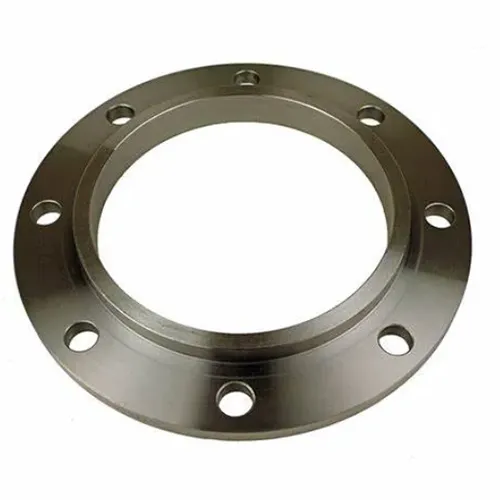-
Cangzhou Yulong Steel Co., Ltd.
-
Phone:
+86 13303177267 -
Email:
admin@ylsteelfittings.com
- English
- Arabic
- Italian
- Spanish
- Portuguese
- German
- kazakh
- Persian
- Greek
- French
- Russian
- Polish
- Thai
- Indonesian
- Vietnamese
- Zulu
- Korean
- Uzbek
- Hindi
- Serbian
- Malay
- Ukrainian
- Gujarati
- Haitian Creole
- hausa
- hawaiian
- Hebrew
- Miao
- Hungarian
- Icelandic
- igbo
- irish
- Japanese
- Javanese
- Kannada
- Khmer
- Rwandese
- Afrikaans
- Albanian
- Amharic
- Armenian
- Azerbaijani
- Basque
- Belarusian
- Bengali
- Bosnian
- Bulgarian
- Catalan
- Cebuano
- China
- China (Taiwan)
- Corsican
- Croatian
- Czech
- Danish
- Esperanto
- Estonian
- Finnish
- Frisian
- Galician
- Georgian
- Kurdish
- Kyrgyz
- Lao
- Latin
- Latvian
- Lithuanian
- Luxembourgish
- Macedonian
- Malgashi
- Malayalam
- Maltese
- Maori
- Marathi
- Mongolian
- Myanmar
- Nepali
- Norwegian
- Norwegian
- Occitan
- Pashto
- Dutch
- Punjabi
- Romanian
- Samoan
- Scottish Gaelic
- Sesotho
- Shona
- Sindhi
- Sinhala
- Slovak
- Slovenian
- Somali
- Sundanese
- Swahili
- Swedish
- Tagalog
- Tajik
- Tamil
- Tatar
- Telugu
- Turkish
- Turkmen
- Urdu
- Uighur
- Welsh
- Bantu
- Yiddish
- Yoruba

Oct . 16, 2024 13:54 Back to list
Understanding the Properties and Applications of Weldable Pipe in Industry
Understanding Weldable Pipe A Key Component in Modern Engineering
In the realm of modern engineering and construction, the term weldable pipe plays a crucial role. Pipes are essential for transporting fluids, gases, and solids in various industries such as oil and gas, water supply, chemical processing, and construction. The ability to weld these pipes effectively dictates the quality, safety, and durability of the systems they are part of. In this article, we will explore what weldable pipes are, their significance, types, and the welding processes commonly employed to join them.
What are Weldable Pipes?
Weldable pipes are those that can be joined together through welding, a process that involves melting the edges of the pipe and allowing them to fuse as they cool. The selection of materials for weldable pipes is vital since not all materials are suitable for welding. Common materials include carbon steel, stainless steel, and certain alloys that possess specific chemical and mechanical properties conducive to welding.
The primary criterion for a pipe to be classified as weldable is its compositional characteristics. Factors such as carbon content, alloying elements, and microstructure play essential roles in determining weldability. For instance, high carbon content can lead to hardening and brittleness, making a pipe difficult to weld without proper techniques and precautions.
The Importance of Weldable Pipes
The significance of weldable pipes cannot be overstated. They are used in various critical applications where the integrity of the piping system is paramount. In oil and gas industries, for example, welded pipes must withstand high pressures and corrosive environments. In water supply systems, leaks caused by poor welding can lead to significant water loss and infrastructure damage.
Moreover, the reliability of welded joints can significantly reduce maintenance costs and enhance safety. A well-executed weld provides a strong and durable connection that withstands environmental stresses, thermal expansion, and contraction. Thus, the ability to produce high-quality welded pipe systems plays a direct role in the overall performance and safety of any installation.
Types of Weldable Pipes
Weldable pipes come in various forms tailored for specific applications. The most common types include
1. Seamless Pipes Produced from a solid round steel cylinder, seamless pipes do not have welding seams, making them ideal for high-pressure applications. Their uniform structure offers better strength and reliability.
weldable pipe

2. Welded Pipes These pipes are made by rolling flat steel plates or coils and welding them together. They are widely used in low-pressure applications and tend to be more cost-effective and available in larger sizes compared to seamless pipes.
3. Stainless Steel Pipes Known for their corrosion resistance, stainless steel pipes are often used in highly corrosive environments. They can be welded using specific techniques that prevent oxidation.
4. Plastic Pipes Although not metallic, certain plastic pipes are weldable using specialized welding techniques. These are often used in water supply and drainage applications.
Welding Processes for Pipes
Several welding processes are utilized for joining pipes, each with unique characteristics
1. MIG Welding (Metal Inert Gas) This semi-automatic welding process is known for its speed and versatility, making it suitable for various types of pipes.
2. TIG Welding (Tungsten Inert Gas) This process offers precise control and is often used for welding stainless steel and thinner pipes. It produces high-quality, clean welds.
3. Stick Welding A more straightforward technique suitable for fieldwork, stick welding can be employed for a variety of metals and conditions.
4. Submerged Arc Welding Often used for thicker pipes, this process provides deep penetration and high welding speeds, making it ideal for heavy-duty applications.
Conclusion
Weldable pipes are an essential component in the infrastructure of modern society, providing the necessary means for the transmission of various materials. Their significance in ensuring the safety, efficiency, and reliability of systems cannot be overlooked. Understanding the types of weldable pipes and the welding processes involved is critical for engineers and operators aiming to meet the demands of today’s industrial applications. As technology advances, the techniques and materials used in pipe welding will continue to evolve, further enhancing performance and safety standards across industries.
Latest news
-
ANSI 150P SS304 SO FLANGE
NewsFeb.14,2025
-
ASTM A333GR6 STEEL PIPE
NewsJan.20,2025
-
ANSI B16.5 WELDING NECK FLANGE
NewsJan.15,2026
-
ANSI B16.5 SLIP-ON FLANGE
NewsApr.19,2024
-
SABS 1123 FLANGE
NewsJan.15,2025
-
DIN86044 PLATE FLANGE
NewsApr.19,2024
-
DIN2527 BLIND FLANGE
NewsApr.12,2024
-
JIS B2311 Butt-Welding Fittings LR/SR 45°/90° /180°Seamless/Weld
NewsApr.23,2024











